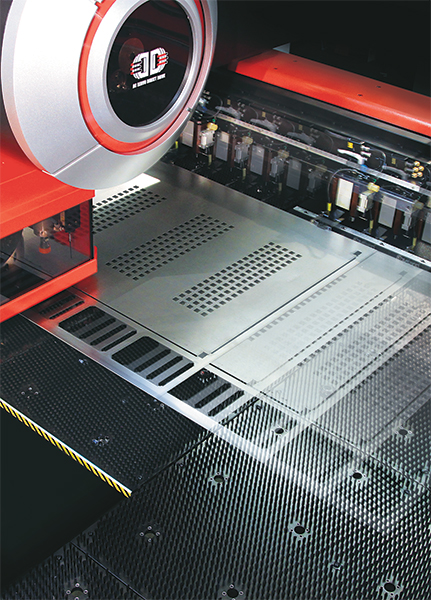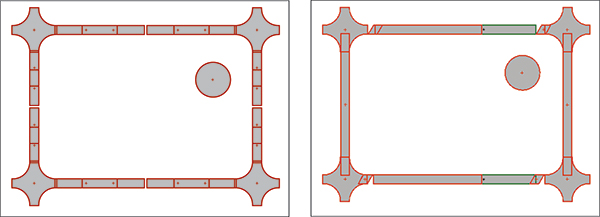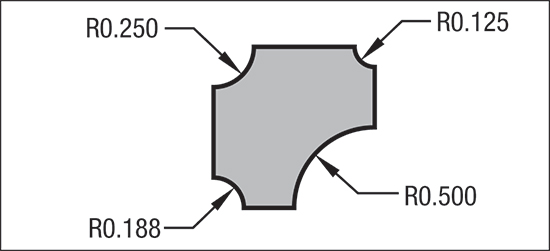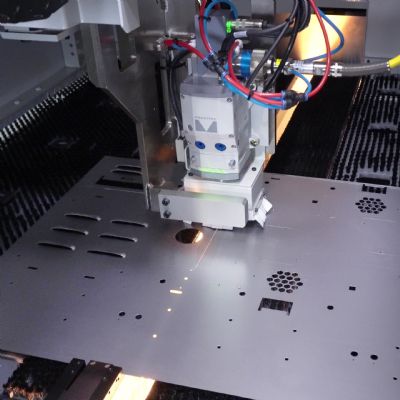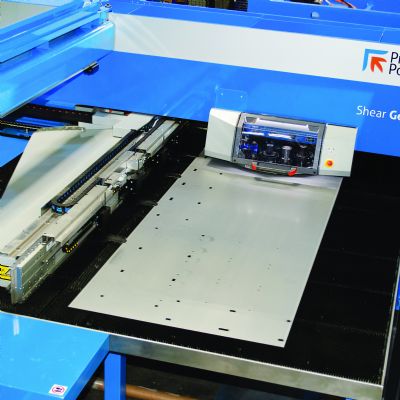Off-the-Shelf Special Tools
New tooling concepts developed in recent years aim to reduce or, in many cases, completely eliminate the need for secondary operations. Case in point, says Brady: fine-contouring tools, and tools for deburring and tapping.The fine-contouring tool nibbles at nearly 800 strokes/min., and makes contours unachievable with standard tools at pitches less than material thickness. This often results in a near-laser-quality edge. Fabricators leverage these capabilities, Brady says, to improve their ability to take on prototype work.
Another off-the-shelf special tool of which Brady speaks fondly is a bow-tie tool—used not to eliminate secondary operations but rather to help fabricators avoid the use of dangerous wire joints. Wire joints, he notes, often find use to connect punched parts to the sheet until they can be released by the operator.
“These wire joints,” says Brady, “are useful in place of microtabs at radiused corners. However, when the parts are shaken out of the nest, the wires can stay attached to the parts and endanger operators. A great option to avoid this hazard is the use of a bow-tie tool, which creates a diamond shape (typically ¼ in. wide by 3⁄8 or ½ in. long) at the radiused corner of the part edge. When shaking parts from the nest, the diamond snaps off easily without leaving slivers.”
One issue when using a bow-tie tool: The diamond may adhere to the part rather than the skeleton, requiring an operator to snap it off. As an alternative, fabricators can opt for a parallelogram tool, which allows the part to break completely from the nest with the parallelogram-shaped tab adhered to the skeleton.
“Programming with the parallelogram tool is a little more complicated than with a bow-tie tool,” Brady says, “but is quickly learned by experienced fabricators.”
Say So Long to Shakers Altogether
Of course, eliminating shaker parts altogether has become the mantra at many a sheetmetal fabricator, and automation is the to make it happen. Automated parts removal from the press table, particularly for fabricators cutting multiple nests of smaller parts, is becoming more common, says Brady, to augment automated sheet-load systems.
“Automated part unloaders pick parts out of the sheets as they are punched,” Brady says, “avoiding the need to use microjoints. The parts are then stacked onto pallets. While it might take an extra 5 to 7 sec. to remove each part from the nest, eliminating the post-processing time to shake the parts out and sort and stack them more than justifies the automation investment in most cases.” MFView Glossary of Metalforming Terms
See also: Amada North America, Inc
Technologies: CNC Punching
Comments
Must be logged in to post a comment. Sign in or Create an Account
There are no comments posted.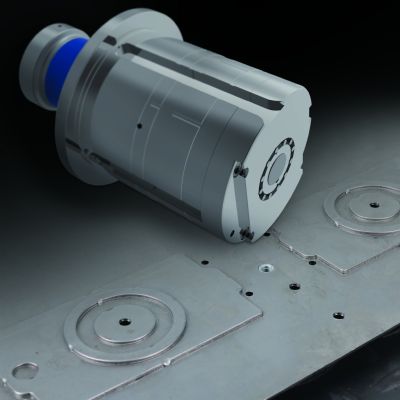 CNC Punching
CNC PunchingCNC Punching: Positive Stop a Positive Advantage
Lou Kren Monday, February 27, 2023







